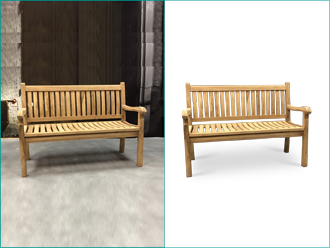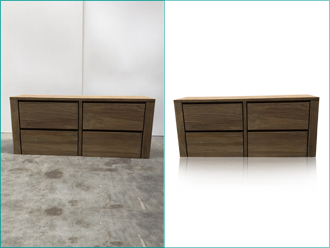


In Photoshop, a clipping path is a vector graphic that outlines an object, like a trace around its edges. Clipping paths are usually used for one of two purposes: cutting an object out or wrapping text around it. Creating clipping paths is a time-consuming job —but it’s necessary. Fortunately, we provide world-class clipping path services.

When it comes to clipping path, attention to detail is essential for creating a lifelike image. You need perfect clipping paths and photo cut-outs so consumers will buy your products and clients will love your photos. Regardless of the role images play in your work, you get accurate, clean clipping paths — every time from us.
At Image Editing Express, we know how important it is to create images that don’t look like they were edited, images that have perfectly drawn clipping paths. That attention to detail results in impressive, realistic-looking images. We hand draw every clipping path and photo cut-out with the Photoshop Pen Tool to ensure we have full control and can achieve clean, finished edges on all images.
Our dedication to delivering quality clipping path services to help you meet your tight deadlines and budgets. Professional, high-quality clipping paths are what we deliver — it’s in our name.
It takes just 4 steps to get your images professionally background removal. Here’s how to get your photos background removal by the experts of Image Editing Express.
Request a quote for the images you need to be edited
Receive an email with your quote within 45 minutes or less
Upload your all images that need to be background removed
Download your neat & clean images and upload to your site




I had Image Editing Express silo 8 images for me, cutting them out of their background. They did all 8 images PERFECTLY, and turnaround was less than 12 hours! The price can’t be beat also.
— John Jamal Rikson
Clipping path — also known as image clipping, deep etching, photo cut-out, closed vector path or shape — is essentially a professional digital photo cut-out. At Image Editing Express, we outline an image by hand. This process allows you to remove a picture from its background, much like cutting an image out of a magazine with scissors.
Once the clipping path is applied, everything on the inside of the line, or path, is included in the final cut, while everything outside is removed.
The benefits of clipping path are that it allows you to manipulate the background of the subject of your image. This is especially helpful in creating white backgrounds for selling online. It can also help you display your subjects in various contextual settings, enabling you to add different backgrounds to create the scene for your photo
Not all clipping path jobs are alike, so the rates for each job vary.
Here are some details on the complexity of clipping paths, and the techniques required for each:
1. Basic
A basic clipping path is the easiest and also the cheapest clipping path to create. You can remove solid objects with very few curved edges from their backgrounds using a basic clipping path.
A basic clipping path would be ideal for products like smartphones, framed art, books, balls and simple canisters.
2. Simple
A simple clipping path is slightly more complex than a basic clipping path, but can still be created quickly, so it usually costs just a bit more than a basic clipping path. Simple clipping paths can remove objects that have more edges and curves than those of basic clipping paths, and also work for objects that have a “hole” in them (such as the interior of a mug handle or the inside of a ring or necklace).
Use simple clipping paths to remove backgrounds from products like simple jewelry, vehicles, single furniture items or other standalone products.
3. Medium
A medium clipping path occurs when an object with a complicated edge must be removed from its background. Medium clipping paths are often complex enough that several paths are created then merged together to achieve the final result. As you would expect, these types of clipping paths cost more than simple and basic clipping paths.
Medium clipping paths are ideal for removing the background from a grouping of simple items.
4. Complex
A complex clipping path is applied to objects with very complicated edges, multiple holes, and possibly multiple objects or varied levels of transparency. Because these types of clipping paths are so time-consuming, they cost more than simple and basic clipping paths.
Anything with fur or hair would require a complex clipping path, as would images with models, any product with netting, and groupings of multiple, complex products.
5. Multiple
A multiple clipping path is a complex clipping path with additional paths carefully crafted within the product itself. Multiple clipping paths can save you the trouble of re-shooting if you change the color of your product or need to correct shadows in only a portion of the image.
Multiple clipping paths are ideal if you have a complicated product or grouping of products that need color changes or color correction in certain areas.
6. Super complex
Sometimes, an object requires so many individual clipping paths that a complex or multiple clipping path just isn’t enough. The super complex clipping path can handle these tough product images, though the cost is significantly higher than that of other types of clipping paths. Super complex, complex, and multiple clipping paths might also need to be used in conjunction with image masking in order to achieve an optimal result.
Furniture with multiple cut-outs, very complex jewelry, pet crates or a grouping of furry objects are all examples of product images that may require a super complex clipping path.
The process of creating a clipping path is meticulous and time-consuming, but it produces some of the most accurate results.
You can create a clipping path by carefully drawing a path with the Pen Tool around the product or subject of your image which you need isolated from the background or other objects.
Once the path is complete, different options within Photoshop’s Paths panel offer different ways to isolate the area within the path from its surroundings.
Whether you have a single image or a huge batch from your latest photoshoot, clipping path services are appropriate for a number of scenarios. And our clipping path image-editing services aren’t reserved for Photoshop newbies.
Busy professional photographers with large batches need hours to carefully edit all of the images from a recent product photoshoot. Freelancers and agencies who have tight client deadlines to meet have tons of other deliverables to wrangle. And ecommerce retailers who know how to use Photoshop are focusing on how to move the needle — not how to accurately draw a clipping path
We take the stress and tediousness of clipping path off your plate so you can meet your deadlines and stay under budget.
If the subject of your image has hair or fuzzy edges (like a teddy bear or a fuzzy blanket) or is transparent. In these scenarios, we recommend advanced image masking.
Image clipping is just one method to remove the background from an image. If you want to learn how to do it yourself, check out our Photoshop tutorial about how to remove the background from a photo with hair.
In this technique, you place the subject of a photo on its own layer, and make the pixels surrounding it transparent. Isolating the image in this way allows you to place your product against another background in Photoshop, InDesign or on a website.
Once you have a perfect clipping path, you can make your background transparent using one of two methods:
Our professionally trained graphic designers in Bangladesh have years of experience in providing clipping path and deep-etching services. We’re masters of Photoshop’s Pen Tool, which allows us to define highly precise clipping paths. We zoom in to your images by as much as 300% when drawing each clipping path. This enables us to have sufficient anchor points to retain the natural shape of the object. Having too many or too few anchor points can result in an inadequate cut-out of an image and images that don’t look real.
Unlike many other deep-etching services, we don’t automate the clipping paths. We also steer clear of using tools such as Magic Wand for quick selection and path creation. We’ve seen, firsthand, the results of automations and tools and how it can hurt your reputation and your brand.
Today’s consumers demand quality, and so do we at Image Editing Express. We pride ourselves on the quality of the finished product — no matter how many images you need edited.








